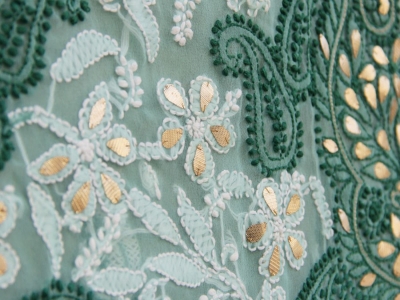
This intricate form of embroidery traces its origins to Lucknow in Uttar Pradesh. In its classic form, white thread is used on white cotton fabric and according to some theories, it dates back to the Mughal era. Initially, it was believed to have been used to embellish clothes worn by men.
Delicately worked chikankari designs were embroidered on the finest of cotton mulmul (muslin) fabrics during the Mughal period, and it had value and worth for its aesthetics. It had been encouraged very much during that time to make it one of the most popular embroidery techniques of India and which has remained so till date. This embroidery technique is popularly used to adorn beautiful kurtas and sarees and even home decor items.
Chikankari produces stunning effects on sheer fabrics for the shadowy effect that it gives. But Chikankari is not restricted. You can do chikan work on any kind of fabric but mostly sheer fabric is preferred for the shadow effect they give. They are mostly done on Malmal cotton, Cambric, muslin, voile, organza, silk, crepe, organdy chiffon, and tassar. When this work is done on net it gives a lace like look which is absolutely stunning.
Believed to be more than four centuries old, it seems to find its roots in Lucknow, the capital of Uttar Pradesh, India. Whether or not it originated during the Mughal rule, one can definitely find its encouragement and flourishing during that period for embellishing all nature of fabrics. The fabrics during the Mughal period were generally the soft malmal and muslin cotton and Chikankari was used to adorn them with exquisite floral designs. Special mention is made by historians that Noorjehan, wife of Emperor Jahangir, was instrumental in creating the environment for the propagation of this art during the emperor’s reign.
Credit : Unnati silks
Picture Credit : Google




